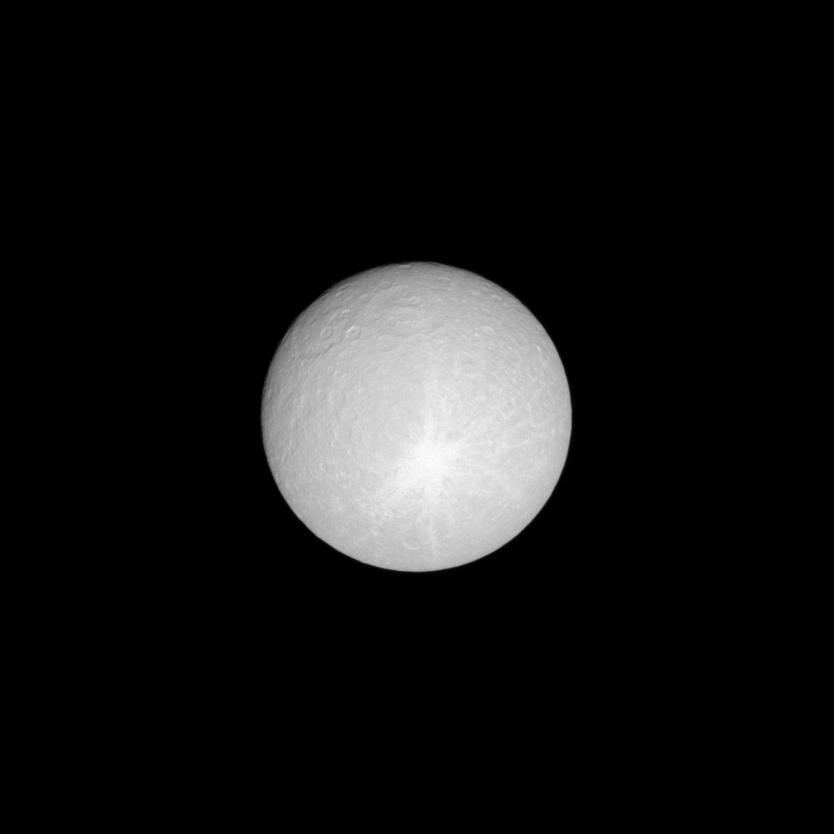Rhea’s Real Big Rays

| PIA Number | PIA11465 |
|---|---|
| Language |
|
With streaks of icy material thrown in many directions, a huge ray crater stretches across nearly half of the leading hemisphere of Saturn's moon Rhea.
With the sun almost directly behind the spacecraft in this low-phase image, the disk of the moon is almost completely lit for Cassini's camera. Lit terrain seen here is on the leading hemisphere of Rhea (1,528 kilometers, or 949 miles across). North on Rhea is up and rotated 30 degrees to the right.
The image was taken in visible light with the Cassini spacecraft narrow-angle camera on March 3, 2009. The view was acquired at a distance of approximately 820,000 kilometers (510,000 miles) from Rhea and at a Sun-Rhea-spacecraft, or phase, angle of 6 degrees. Image scale is 5 kilometers (3 miles) per pixel.
The Cassini-Huygens mission is a cooperative project of NASA, the European Space Agency and the Italian Space Agency. The Jet Propulsion Laboratory, a division of the California Institute of Technology in Pasadena, manages the mission for NASA's Science Mission Directorate, Washington, D.C. The Cassini orbiter and its two onboard cameras were designed, developed and assembled at JPL. The imaging operations center is based at the Space Science Institute in Boulder, Colo.
For more information about the Cassini-Huygens mission visit http://saturn.jpl.nasa.gov . The Cassini imaging team homepage is at http://ciclops.org .
Credit: NASA/JPL/Space Science Institute
